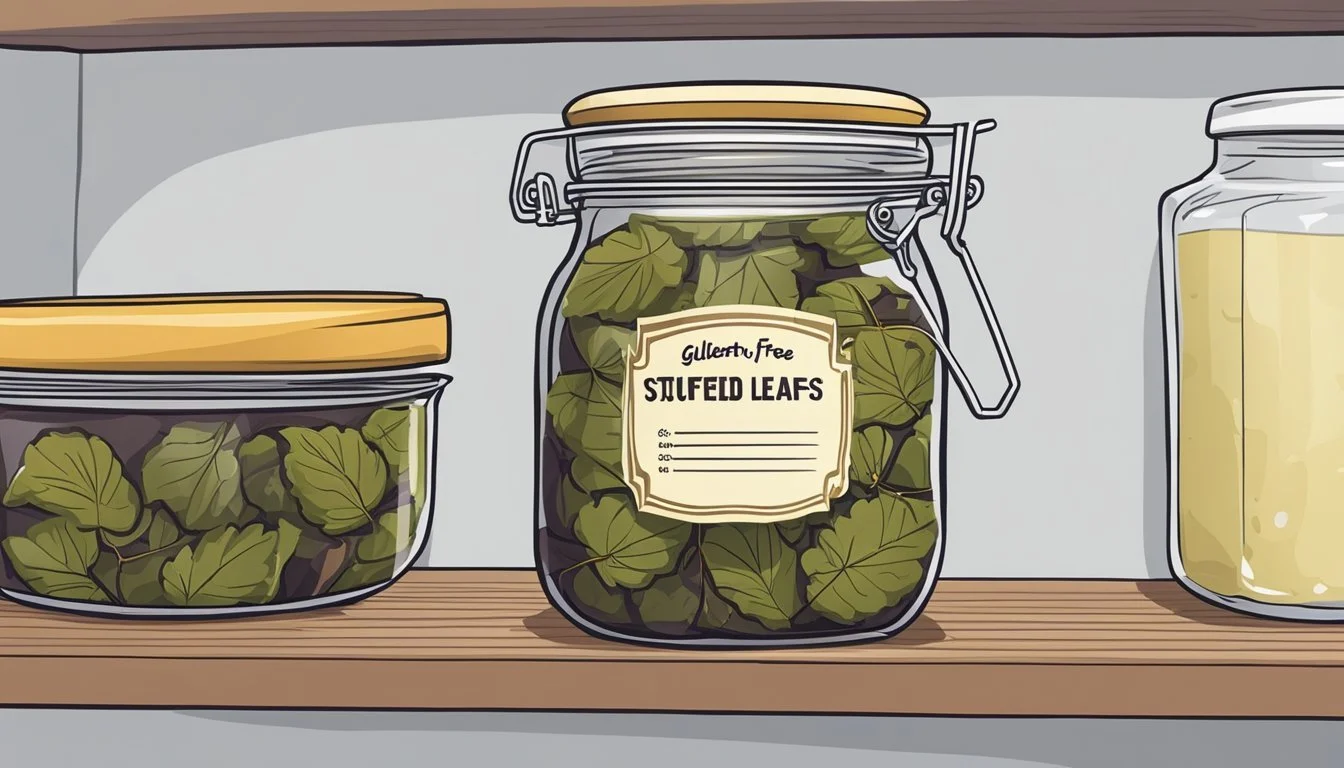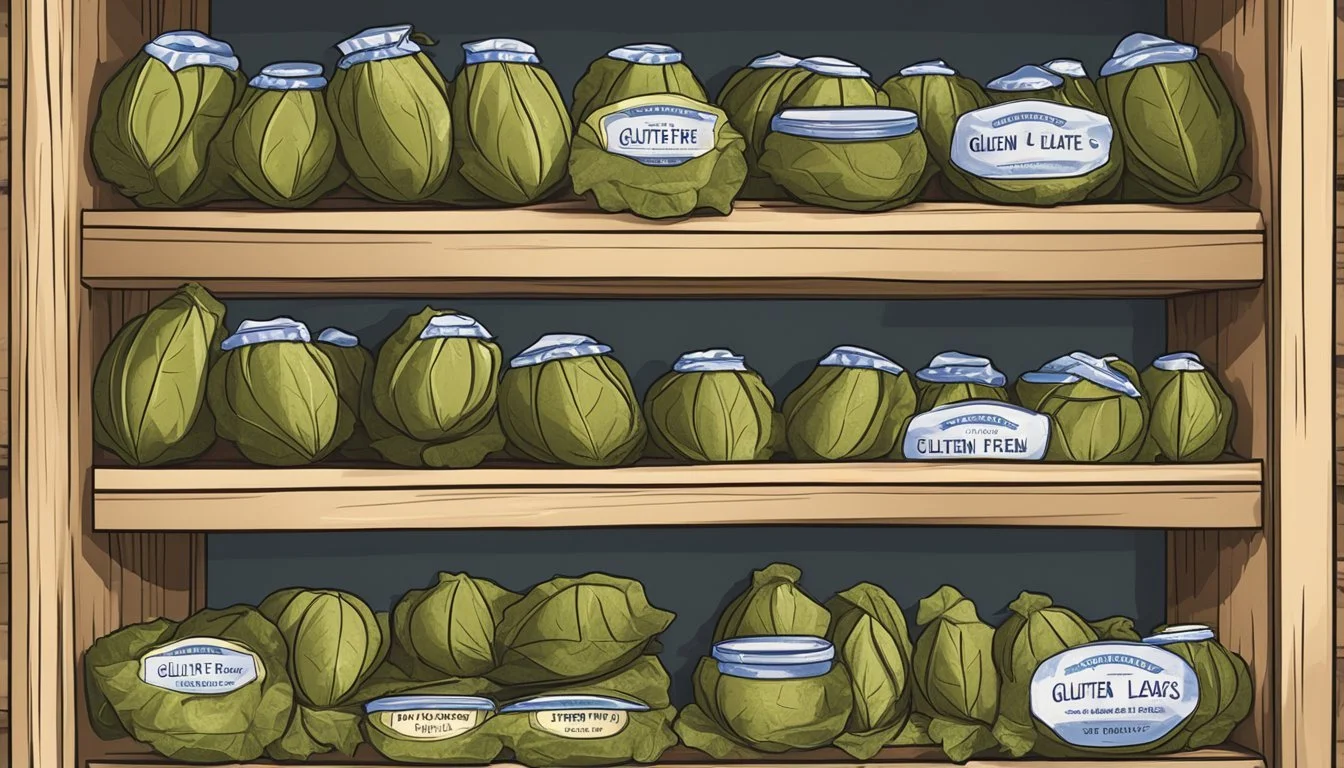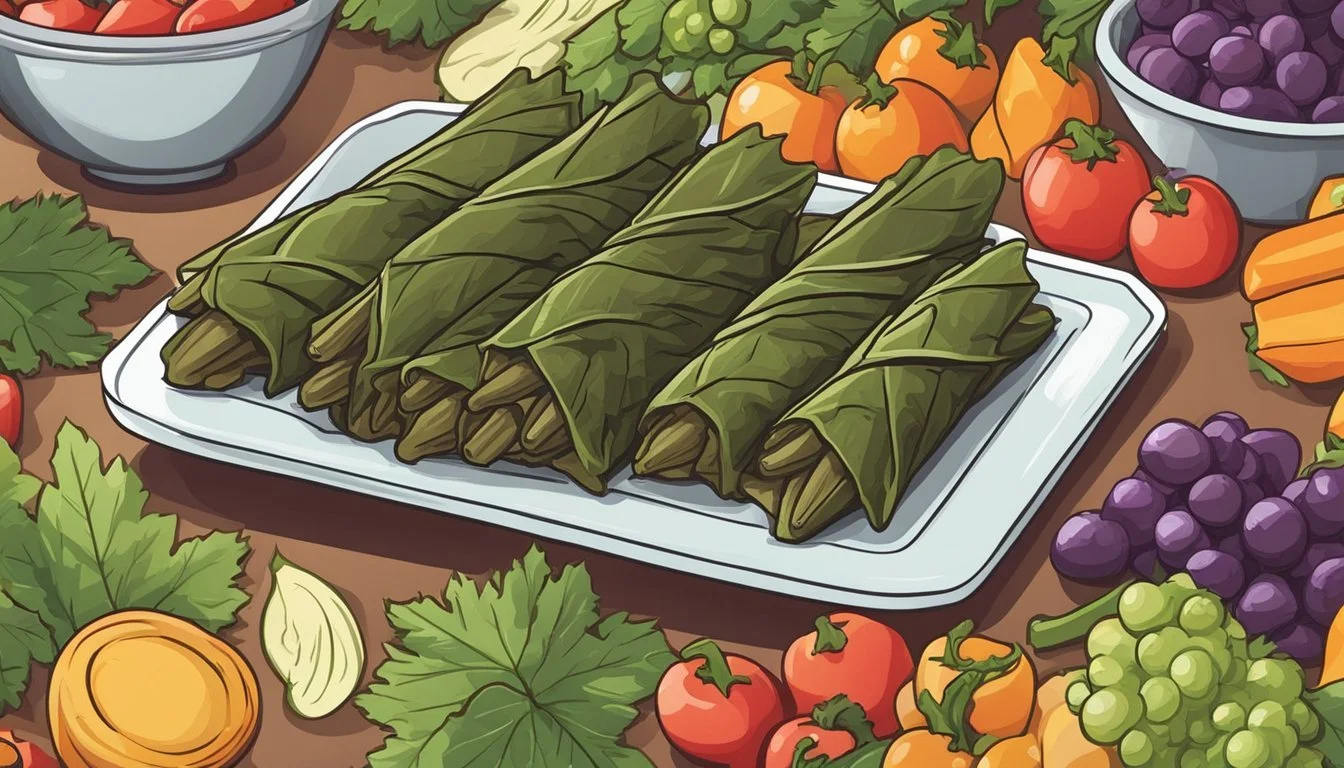How Long Do Gluten-Free Stuffed Grape Leaves Last?
Shelf Life & Storage Guide
Stuffed grape leaves, a staple in Mediterranean and Middle Eastern cuisine, are a delightful treat suitable for various dietary needs, including gluten-free and vegetarian diets. They can be enjoyed both as appetizers or as part of a satisfying dinner spread. These flavorful rolls, often filled with rice, herbs, and sometimes nuts, provide a burst of taste in every bite.
When stored properly in the fridge, gluten-free stuffed grape leaves can last for around 3-5 days. This ensures that their delicate flavors and textures remain intact, making them safe and enjoyable to eat. For those who wish to extend their shelf life, freezing them is a viable option, allowing you to savor this Mediterranean delight for even longer periods.
By preparing gluten-free stuffed grape leaves, one can easily cater to various dietary preferences without compromising on taste. Whether aiming to enjoy a quick snack or an elaborate meal, these stuffed leaves are both versatile and delicious.
Overview of Stuffed Grape Leaves
Stuffed grape leaves are a popular dish with roots in Middle Eastern and Mediterranean cuisines. They can be served as appetizers, side dishes, or main courses, offering a range of flavors through various ingredients and preparations.
Culinary Significance
Stuffed grape leaves, also known as dolmades, are treasured for their distinctive taste and versatility. They are often featured in Middle Eastern and Mediterranean meals.
These grape leaves are usually filled with ingredients such as rice, herbs, and spices. Olive oil, salt, and pepper are common seasonings, which enhance the flavors. Sometimes, meat is added, although vegetarian versions are also popular.
Lemon juice provides a refreshing citrus note, while the broth keeps the dolmades moist during cooking. They are often accompanied by yogurt or a squeeze of fresh lemon juice when served.
Variations and Common Ingredients
There are many variations of stuffed grape leaves, influenced by regional traditions and available ingredients.
Common Ingredients:
Grape leaves: Fresh or preserved grape leaves serve as the wrapper for the filling.
Filling: A mix of rice (brown or long-grain), vegetables, and sometimes meats.
Herbs and Spices: Parsley, cinnamon, and other fresh herbs to enhance the flavor.
Olive oil and Broth: Keep the dish moist and flavorful during cooking.
Extras: Pine nuts, lemon zest, and diced tomatoes.
Variations:
Vegetarian: Focus on rice, vegetables, and herbs like parsley and dill.
Meat-filled: Often use ground lamb or beef combined with rice and spices.
Gluten-Free: Uses gluten-free grains as a substitute for traditional rice.
These variations illustrate the adaptability of this dish to different dietary preferences and cultural influences.
Preparing Gluten-Free Stuffed Grape Leaves
When preparing gluten-free stuffed grape leaves, it is crucial to select the right ingredients and master the technique for stuffing and rolling the leaves. These key steps ensure a delicious and visually appealing dish.
Selecting Gluten-Free Ingredients
Choosing gluten-free ingredients is critical for this recipe. Use grape leaves that are free from additives or preservatives containing gluten. For the filling, opt for long grain rice, which remains firm during cooking.
Essential ingredients include:
Olive oil for sautéing and flavor
Garlic for aromatic richness
Lemons for a tangy finish
Dill to add a fresh, herbal note
Vegetable broth for cooking liquid
Ensure all spices and additional ingredients used are labeled gluten-free to avoid contamination. Fresh, whole foods from the garden such as vegetables for the filling can enhance the dish's flavor substantially.
Technique for Stuffing and Rolling
Place a grape leaf flat with veins up. Add a small amount of the prepared filling comprising rice, chopped vegetables, and seasonings towards the base where the stem was attached.
Leave about 1 cm at each side. Roll the leaf tightly, folding in the sides as you go to enclose the filling completely. This technique helps keep the leaves intact during cooking.
Arrange rolled leaves snugly in a single layer inside a deep pot lined with sliced tomatoes and onions for added moisture and flavor. Cover with vegetable broth and a mixture of olive oil and lemon juice. Weigh down with a plate, bring to a simmer, and cook on low heat for 75-90 minutes until tender.
Cooking and Serving
Gluten-free stuffed grape leaves are a delightful dish often enjoyed as an appetizer or a light main course. To enhance their flavor and presentation, careful consideration must be given to the cooking methods and serving suggestions.
Steaming Methods
Steaming is essential to achieve tender and flavorful grape leaves. Begin by layering slices of tomatoes and onions at the bottom of a deep pot to prevent sticking. Place the stuffed grape leaves in a snug, single layer on top of these slices. In cases where you have more grape leaves than can fit in a single layer, create additional layers but ensure they have room to expand slightly during steaming.
Add enough water and lemon juice to cover the grape leaves partially. Maintain a gentle simmer over low heat. Cover the pot tightly, using a lid or foil to trap the steam. This method helps infuse the grape leaves with a lemony flavor, enhancing their delicate taste. Steaming typically requires about 45 minutes, but checking the leaves for tenderness at intervals is recommended.
Serving Suggestions and Accompaniments
Gluten-free stuffed grape leaves shine when served with a variety of accompanying dishes. They can be presented warm or at room temperature. Drizzle them generously with extra virgin olive oil and a dash of lemon juice before serving to highlight their flavors. As an appetizer, they pair well with hummus or tzatziki.
For a light main course, consider serving these grape leaves alongside a cucumber tomato salad dressed with olive oil and lemon. Another fantastic option is to plate them with a side of fragrant rice pilaf enhanced with dill and spices. Sprinkle a bit of sea salt and additional fresh herbs for added zest.
These variations ensure that the dish remains versatile and appealing for different occasions.
Storage and Shelf Life
Gluten-free stuffed grape leaves can be preserved to maintain their taste and nutritional value. Proper storage techniques include refrigeration and freezing, each requiring specific procedures to ensure optimal freshness.
Refrigeration Guidelines
Refrigerating gluten-free stuffed grape leaves can extend their freshness. Place the stuffed grape leaves in an airtight container or wrap them tightly with plastic wrap. This prevents them from drying out and absorbs other fragrances in the refrigerator.
Generally, stuffed grape leaves last around 3-5 days when refrigerated. It's important to mark the date of storage to keep track of freshness. Leftovers should be inspected for any signs of spoilage such as an off smell or a change in texture before consumption.
Maintaining a consistent refrigerator temperature, ideally around 34-40°F (1-4°C), is crucial. This helps in keeping the grape leaves fresh and retains their nutrition. Refrigeration is a simple and effective way to store leftovers short-term.
Freezing and Thawing Practices
Freezing is another excellent option to prolong the shelf life of gluten-free stuffed grape leaves. To freeze, place them in a single layer on a baking sheet until frozen, then transfer them to a freezer-safe bag or airtight container. This prevents them from sticking together.
Frozen stuffed grape leaves can last up to 3 months. Labeling the container with the date is again necessary for tracking purposes. When ready to eat, thaw in the refrigerator overnight for best results.
For optimal taste, avoid thawing at room temperature, as this may affect the texture. Reheat gently on the stovetop or in the microwave. These steps ensure that the delicious flavor and nutritional benefits of the grape leaves are maintained even after freezing.
Health Benefits and Nutrition
Stuffed grape leaves are a nutrient-dense food that offers a variety of health benefits. They contain vitamins such as A, C, E, and K. These vitamins are crucial for maintaining good vision, immune function, and skin health. They also have minerals like calcium, magnesium, iron, and copper which support bone health and metabolic processes.
Dietary fiber is another essential component in stuffed grape leaves. Fiber aids in digestion and helps maintain a healthy gut. Olive oil is commonly used in the preparation, which provides healthy fats necessary for heart health and reducing inflammation.
Being naturally gluten-free, these stuffed grape leaves are suitable for people with gluten sensitivities or celiac disease. Many recipes are also vegan and vegetarian, making them accessible for those following these diets. Ingredients like parsley, lemon, tomato, black pepper, and mint not only add flavor but also contribute additional nutrients and antioxidants.
Here is a quick overview of some key nutritional information found in stuffed grape leaves:
Nutrient Amount (per serving) Benefits Vitamin A High Supports eye health Vitamin C High Boosts immune system Calcium Moderate Essential for bone health Iron Moderate Aids in oxygen transport Fiber High Promotes digestion Olive Oil Used in preparation Provides healthy fats
Including these foods in your diet can provide essential nutrients and are versatile enough to fit into various dietary preferences.
Pairings and Occasions
Gluten-free stuffed grape leaves are versatile and can be enjoyed in various settings and seasons. They pair well with a variety of dishes and are suitable for different meal times, from lunch to dinner.
Best Seasons and Settings
In spring and summer, gluten-free stuffed grape leaves shine at outdoor gatherings and picnics. Their light and refreshing nature makes them perfect for warmer weather.
These grape leaves work excellently as appetizers. Serve them with Mediterranean favorites such as hummus, baba ganoush, or a fresh salad with sliced tomatoes and herbs.
For dinner or lunch, they complement main courses that feature lemony and herb-infused flavors. They are well-suited for both casual and formal dining settings. Their gluten-free nature ensures that they are accessible to guests with dietary restrictions, making them an inclusive choice for any occasion.







